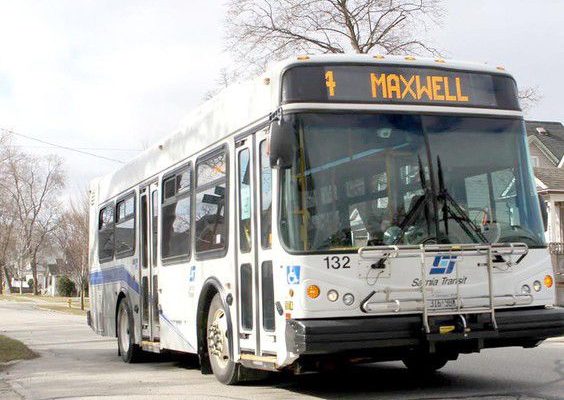Bus routes are changing in Sarnia this September.
The changesincluding upping service on busy route two, tweaking Wellington Road and Maxwell Street route service to better handle increased ridership on Confederation Street, adding a new express route on London Road between Lambton Mall and Vidal Street, and continuing other combined summer-service routes, are in part based on passenger surveys, said city transit manager Michelle Carter.
“A lot of passengers had asked for more consistent routing,” she said, about the decision to combine, during the day, routes eight and 14, which were already combined evenings and weekends.
Keeping that route combined at all times takes out any potential confusion, Carter said.
“So people know this is the same route whether it’s 6:30 in the morning or 7:30 at night,” she said.
Other changes were based on feedback from drivers, from the city’s transit advisory committee and from ridership data, including how people pay, and where they board and exit, she said.
The changes are also in response to a new, $3-million transit terminal being built at the Clearwater Community Centerbut some changes — like the combined eight and 14 — are already in place for summer service that began earlier this month, Carter said.
“We thought it would be more disruptive to people’s traveling if we go back to (regular) service for maybe a month or two (before terminal construction finishes), then we have to change again when we move to Clearwater,” she said about why the route changes overall are taking effect Sept. 2, when summer service ends.
Started in 2021 to give better access to major city parksthis year’s summer service also includes a new north-south route along Indian Road, Exmouth and East streets, “to help further connections and (provide) more travel options for people,” Carter said.
Kids 12 and under continue to ride free year-round, she said.
Routes overall, meanwhile, have been running well since switching to 40-minute intervals in March, she said.
Buses were arriving on average six minutes behind schedule, terminal-to-terminal, under the old 30-minute-route system, she said.
“We have dropped that to we are less than one per cent late,” meaning riders are no longer missing their transfers, she said.
“Those connections for passengers are immensely improved,” she said.
Ridership, not including evenings or weekends, was 487,000 between January and May, Carter said.
“It’s quite significant, even that,” she said.
Last fall Carter noted ridership statistics had rebounded to about what they were in 2019, before COVID-19 made an impact.
Overall, the route changes should improve the system, she said.
